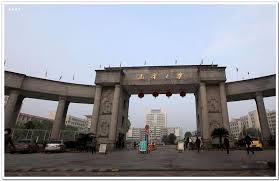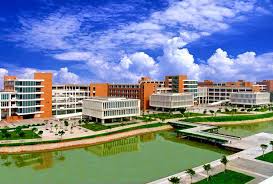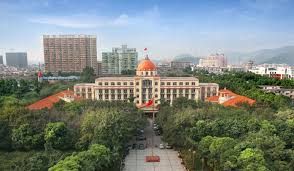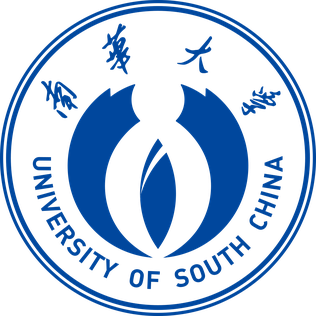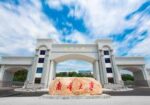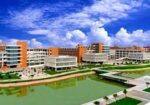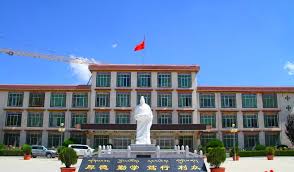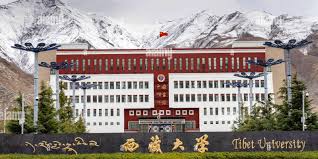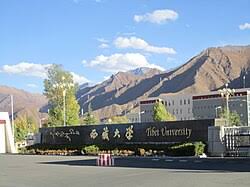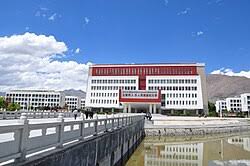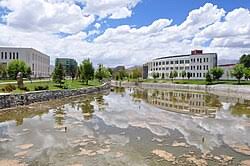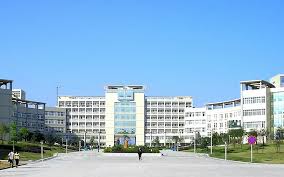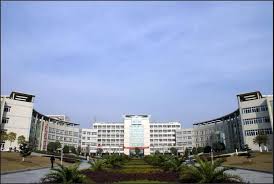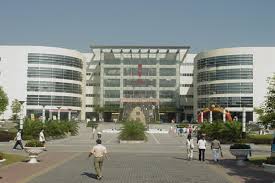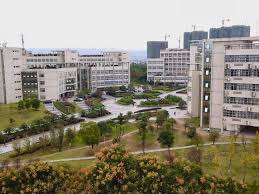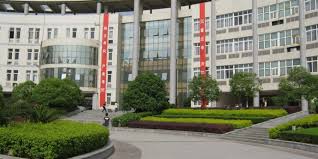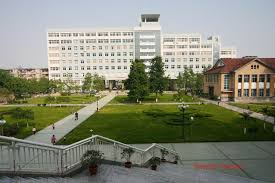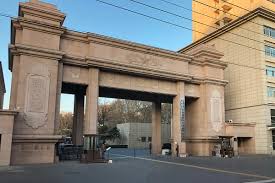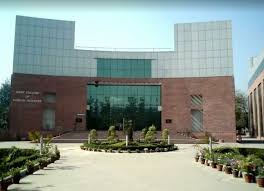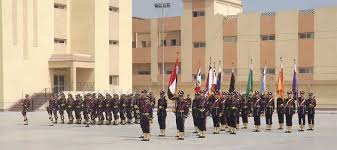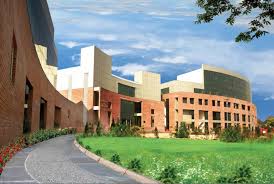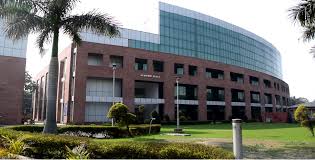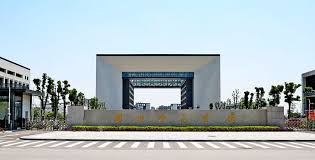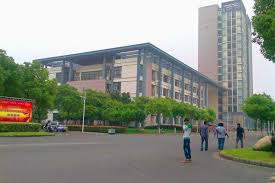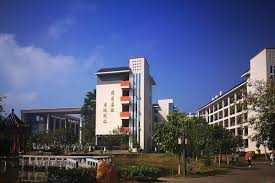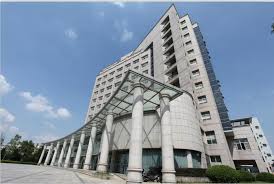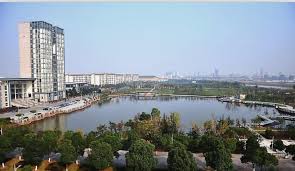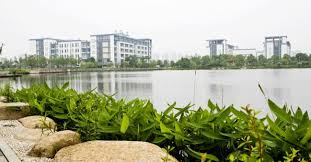University of South China Faculty of Medicine In March 2000, the Central South Institute of Technology and Hengyang Medical College merged to officially form the University of South China (USC). In October 2002, the Sixth Research Institute of the Nuclear Industry was also added, enhancing its academic and research posture even further.
About University of South China Faculty of Medicine
The Central South Institute of Technology had its roots in the Hengyang Mining and Metallurgy Engineering College, which was established in 1959, while Hengyang Medical College had its foundation in Hunan Hengyang Medical College, which was opened in 1958.
The university is jointly governed by a number of important national and regional authorities, such as the Ministry of Industry and Information Technology, the Ministry of Ecology and Environment, the National Health Commission, the State Administration of Science, Technology and Industry for National Defense, China National Nuclear Corporation, and the People’s Government of Hunan Province. It has been classified as a first-class university construction unit in Hunan Province and is supported under the Basic Capacity Building Project for Universities in Central and Western China.
University of South China Faculty of Medicine – Table of Contents
- About
- Advantages
- Ranking
- Departments And Course Duration
- Facilities and Infrastructure
- Required Documents
- Eligibility Criteria
- Admission Process
- Benefits
- Privileges And Benefits for Indian Students
- FAQ’s
Over the course of its lengthy history, the University of South China has accumulated unique strengths and academic attributes. These are embodied in its “nuclear science attributes,” “medical brand excellence,” and “environmental protection strengths.”
At present, it has become a comprehensive university with balanced development across nine important disciplines: engineering, medicine, philosophy, economics, law, literature, science, management, and art. It has 25 directly affiliated colleges, 8 affiliated hospitals, and 27 postgraduate collaborative units of training.
It has 68 undergraduate programs, 26 first-level master’s degree authorization points, 20 professional master’s degree categories, 8 first-level doctoral degree authorization points (1 of them is a professional doctoral category), and 5 postdoctoral research mobile stations.
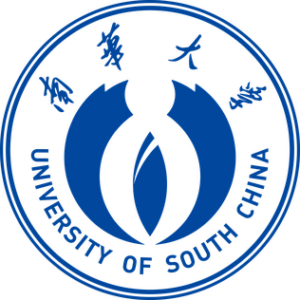
University of South China Faculty of Medicine Accreditations, Affiliations, Recognitions
Today, the university has students from all over China, including Hong Kong, Macao, and Taiwan, as well as foreign students from many countries and regions. Its student population includes more than 38,000 full-time undergraduate students, more than 7,400 master’s and Ph.D. candidates, and close to 400 foreign students.
The academic excellence of the university is supported by a highly experienced faculty team of 2,609 members including more than 100 scholars who are national experts, including Changjiang Scholars Distinguished Professors, National Science Fund for Distinguished Young Scholars, national talent program experts, and state-recognized specialists. Apart from this, over 150 scholars are featured in notable provincial and ministerial talent programs, such as the Hunan Furong Scholars and Outstanding Young Scholars.
USC has also set up 38 high-level teaching and research groups, such as Huang Danian-style teaching groups, defense science and technology innovation teams, and provincial-level teaching and innovation groups. It is also identified as a discipline innovation and talent introduction site by China’s national “111 Plan.” The university has now got 19 national first-class undergraduate programs and 21 national-level characteristic and key programs, such as defense programs, shortage disciplines, and comprehensive reform pilots.
At the level of teaching and academic resources, the university has 3 national-level experimental teaching and virtual simulation centers, 20 national first-class courses, and a number of national excellent and open courses. It also has 2 Ministry of Education practical teaching bases for ideological and political education, and over 40 provincial-level innovation and entrepreneurship centers.
Notably, USC led the country in piloting the “Free Medical Students” policy, which is designed to foster medical personnel for rural and grassroots regions. It has also initiated the “Medicine + X” interdisciplinary talent development pattern. Additionally, the university was chosen to be among the first institutions to pilot the Excellent Engineers and Excellent Doctors Education Programs and the “Three-All Education” overall reform project.
Its commitment to innovation and student development has seen it recognized as a National May 4th Red Flag Youth League Committee, a national university with ordinary innovation and entrepreneurship experience, and a pioneering collective in youth employment and entrepreneurship education.
Academically, USC has made remarkable international achievements. Eight of its fields—clinical medicine, chemistry, engineering, pharmacology and toxicology, biology and biochemistry, materials science, environmental science and ecology, and molecular biology and genetics—are ranked among the top 1% in ESI international rankings. Furthermore, nuclear science and technology has been classified as a “World-Class Cultivation Discipline.”
The university possesses well-integrated scientific research infrastructures, with 9 national-level platforms, such as the National Nuclear-Medical Integration Innovative Talent Training Demonstration Base, the Nuclear Fuel Cycle Technology and Equipment Collaborative Innovation Center, and the National Demonstration International Science and Technology Cooperation Base for Nuclear Energy and Nuclear Safety.
It also houses many important laboratories and research bases at the level of the Ministry of Education, Ministry of Ecology and Environment, and National Key Laboratory Cultivation Base. At the ministerial and provincial level, USC operates 84 research laboratories, engineering technology centers, and social research bases, which collectively form a solid basis for cutting-edge innovation, interdisciplinary research, and applied learning. With this combination of history, academic quality, innovation, and social responsibility, the University of South China has become a topnotch institution for higher education and research in China with a focus on developing talent, pushing science and technology forward, and addressing national and regional development demands.
Advantages of Studying in University of South China Faculty of Medicine
Cost-effective education:
The cost of studying medicine in China is significantly lower than in India, Europe, or the US.
English-taught programs:
Many Chinese medical universities offer programs in English, making them accessible to international students, including those from India.
Globally recognized degree:
Medical degrees from reputable Chinese universities, like USC, are often recognized by international bodies like the WHO, and the National Medical Commission (NMC) of India.
Potential for NMC approval:
If the university is recognized by the NMC, students can return to India and practice medicine without needing to pass additional exams.
No need for donations:
Unlike some institutions in India, direct admission to MBBS programs in China doesn’t require donations.
General Advantages:
Good infrastructure and facilities:
USC, like many Chinese universities, boasts modern infrastructure, well-equipped libraries, and a conducive learning environment.
Friendly environment:
China is known for its welcoming and inclusive environment, particularly for international students.
Strong academic reputation:
The University of South China is a well-regarded institution, and its medical program can lead to good career prospects.
Research opportunities:
USC offers research opportunities and collaborations, allowing students to gain hands-on experience in their field.
Internationalization:
The university encourages international collaborations and exchange programs, providing students with global exposure.
Vibrant city life:
Located in Hunan Province, students can enjoy a dynamic city with cultural and recreational opportunities.
Latest Notifications:
University of South China Faculty of Medicine – Ranking
The University of South China (USC) has developed into a prominent institution for scientific research and innovation over the decades, conducting over 3,600 major national and international research projects. Some of the prominent national projects include the “863” High-Tech Program, the “973” National Basic Research Program, and various major national science and technology projects.
The university has also participated in National Key R&D Program projects, key plans of the National Natural Science Foundation of China, joint fund key projects, international (regional) cooperative research projects, foreign senior scholars research projects, defense basic research projects, and nuclear energy development special projects.
In appreciation of its exceptional achievements, USC has won 13 national-level awards for science and technology, more than 300 ministerial and provincial-level awards for science and technology, and over 20 ministerial and provincial awards for excellence in social science accomplishment. These awards reflect the university’s superiority in pushing forward the natural sciences as well as the humanities.
The university is also serious about international cooperation and academic exchange. It has made over 30 partnership agreements with the world’s top universities and research institutions, among them the International Atomic Energy Agency (IAEA), the University of Cambridge (UK), the Australian National University, and Tohoku University (Japan). Its dedication to internationalization has secured USC approval as the “Hunan Foreign Experts Workstation”, and its international student programs have cleared the certification of “Quality of Education and Management for International Students in China” by the Ministry of Education. Additionally, the university was identified as an advanced collective unit in China’s foreign medical aid activities, highlighting its role in developing global health.
USC’s 8 directly affiliated hospitals are distributed in strategic locations in Hengyang and Changsha. The First Affiliated Hospital, Second Affiliated Hospital, South China Affiliated Hospital, Changsha Central Hospital, Affiliated Maternal and Child Health Hospital, and the Affiliated Occupational Disease Prevention and Treatment Hospital among them are all Grade III Class A hospitals, the most advanced in China’s medical care system.
Most significantly, the Seventh Affiliated Hospital became the first provincial honorary and veteran hospital in the nation to be handed over to a university. Together, these hospitals have a staff of close to 13,000 medical personnel and over 3,000 clinical teachers, with more than 10,000 open hospital beds. They treat an average of 6 million outpatients and emergencies and conduct over 160,000 surgeries every year. USC has also been specified as a construction unit for the national major epidemic treatment base and is a regional medical and health center, with an important role in ensuring public health.
The University Library is yet another pillar of academic excellence, with 2.92 million printed books, 568.67 terabytes of digital content, 254 terabytes of electronic books, and more than 12,000 Chinese and foreign journals. Furthermore, the university also issues a number of well-respected academic journals, such as the Chinese Journal of Arteriosclerosis, the Journal of Central South Medical Sciences, the Journal of the University of South China (Natural Science Edition), and the Journal of the University of South China (Social Science Edition). They act as significant platforms for sharing recent research and scholarly contributions.
Over the past six decades, USC has produced more than 300,000 highly qualified professionals across diverse fields, establishing itself as the “cradle of talent cultivation” for China’s nuclear industry and a vital contributor to the construction of a Healthy Hunan. Its graduates are already working on priority industries and fields like defense, nuclear power, medicine, green protection, equipment manufacturing, and financial management and are playing vital roles in the development of China and the world.
With its school motto of “Virtue, Erudition, Truth-seeking, and Aspiration” and inspired by the long-lived ‘Nanhua Spirit’ of “Diligence, Practicality, Dedication, Self-improvement, and Innovation,” the University of South China continues to put talent development at the very forefront of its mission. It keeps firmly sticking to serving national strategic demands and societal development while continuously increasing its comprehensive power. Guided by its vision shared with the nation’s “Double First-Class” plan, USC is boldly pursuing its mission of becoming a world-class, high-level university in the new times.
Departments And Course Duration in University of South China Faculty of Medicine
MBBS Program – University of South China Faculty of Medicine
Course Duration
- The MBBS program at the University of South China is a 6-year undergraduate program designed for international students, including those from India.
- Structure:
- 1st Year – 2nd Year: Pre-clinical studies (basic sciences such as anatomy, physiology, biochemistry, pathology, microbiology, pharmacology).
- 3rd Year – 4th Year: Para-clinical and clinical studies, including pathology, forensic medicine, community medicine, and introduction to clinical medicine.
- 5th Year: Full clinical training across all major medical specialties in affiliated hospitals.
- 6th Year: Internship (compulsory one-year clinical rotation at university-affiliated hospitals).
- The program is taught in English medium for international students.
Degree Awarded
- Upon successful completion, students are awarded the Bachelor of Medicine and Bachelor of Surgery (MBBS) degree.
- The degree is recognized by the World Health Organization (WHO) and is listed in the World Directory of Medical Schools (WDOMS). Graduates are eligible to sit for exams like FMGE/NExT (India), USMLE (USA), PLAB (UK), and others.
Departments – Faculty of Medicine
The Faculty of Medicine at the University of South China is one of the strongest divisions of the university, with specialized departments covering basic medicine, clinical medicine, preventive medicine, and health sciences.
1. Pre-Clinical Departments (Basic Medical Sciences)
- Human Anatomy
- Histology & Embryology
- Physiology
- Biochemistry & Molecular Biology
- Pathology
- Microbiology & Immunology
- Pharmacology
- Forensic Medicine
2. Clinical Medicine Departments
- Internal Medicine (including cardiology, respiratory medicine, nephrology, endocrinology, gastroenterology, rheumatology, hematology)
- Surgery (general surgery, orthopedic surgery, neurosurgery, cardiothoracic surgery, urology, plastic surgery)
- Obstetrics & Gynecology
- Pediatrics
- Dermatology & Venereology
- Ophthalmology
- Otolaryngology (ENT)
- Psychiatry & Mental Health
- Neurology
- Anesthesiology & Critical Care Medicine
- Oncology
3. Public Health and Preventive Medicine
- Epidemiology & Biostatistics
- Occupational and Environmental Health
- Nutrition & Food Hygiene
- Health Management & Policy
4. Allied and Specialized Fields
- Stomatology (Dentistry)
- Nuclear Medicine (a distinctive strength of USC)
- Medical Imaging & Radiology
- Rehabilitation Medicine
- Nursing
- Pharmacy
Clinical Training and Hospitals
- The university has 8 affiliated hospitals, most of which are Grade III Class A hospitals (the highest level in China).
- Students undergo rotations in different specialties, gaining hands-on training in patient care, diagnostics, and surgery.
- Annual clinical exposure includes millions of outpatient visits and thousands of surgical cases, ensuring strong practical experience.
The MBBS program at the University of South China Faculty of Medicine is a 6-year, English-medium course that combines strong basic science education, extensive clinical training, and internship rotations. With comprehensive departments spanning basic, clinical, preventive, and nuclear medicine, the faculty provides well-rounded medical education, making graduates eligible for global medical licensure exams.
Latest Updates:
Facilities and Infrastructure in University of South China Faculty of Medicine
1. Campus & College Infrastructure
- The Faculty of Medicine is located within the main USC campus in Hengyang, Hunan Province, with modern academic and clinical training facilities.
- The campus covers a vast area with well-planned teaching buildings, laboratories, hospitals, hostels, libraries, and sports complexes.
- Advanced digital learning resources and smart classrooms are integrated into teaching.
2. Academic & Teaching Facilities
- Lecture Halls & Classrooms: Equipped with multimedia systems, projectors, simulation facilities, and air-conditioning.
- Medical Laboratories: Specialized labs for anatomy, physiology, biochemistry, microbiology, pathology, pharmacology, molecular biology, and forensic medicine.
- Simulation & Skills Centers: Virtual dissection labs, 3D anatomy models, and clinical simulation labs to train students in real-life medical scenarios.
- Research Facilities: Over 80 provincial and ministerial laboratories, including key labs for nuclear medicine, molecular biology, pharmacology, and medical imaging.
- National-level teaching platforms, including 3 experimental teaching demonstration centers and virtual simulation labs.
3. Clinical Training Facilities
- The university has 8 directly affiliated hospitals (distributed across Hengyang and Changsha).
- 6 hospitals are Grade III Class A hospitals, providing high-standard clinical exposure.
- The hospitals collectively provide:
- 10,000+ hospital beds
- 13,000 medical staff & 3,000 clinical teachers
- 6 million+ annual outpatient visits
- 160,000+ annual surgical cases
- These hospitals serve as teaching and training centers for MBBS students during their clinical years and internship.
4. Hostel & Accommodation
- International student dormitories are well-furnished, secure, and affordable.
- Facilities include single/shared rooms, Wi-Fi, study desks, heating, and common kitchens.
- The hostels are located near the teaching buildings and hospitals for student convenience.
- 24/7 security and surveillance ensure safety for international students.
5. Library & Digital Resources
- University Library Collection:
- 2.92 million printed books
- 568.67 terabytes of digital resources
- 254 terabytes of e-books
- 12,000+ Chinese and international journals & periodicals
- Access to online medical databases such as PubMed, CNKI, Elsevier, and Springer.
- Dedicated medical library section with research papers, journals, and reference materials.
- Comfortable reading halls and digital learning spaces for students.
6. Canteen & Dining Facilities
- Multiple canteens and cafeterias serving Chinese, Asian, and Halal food options.
- Special arrangements for international students, with some kitchens available in hostels for self-cooking.
7. Sports & Extracurricular Activities
- Sports infrastructure includes:
- Gymnasiums
- Outdoor stadiums for football, basketball, volleyball, tennis, and athletics
- Indoor facilities for table tennis, badminton, and martial arts
- Student clubs and associations promote cultural exchange, debates, arts, music, and volunteering.
- Annual cultural festivals, sports meets, and student exchange programs are actively conducted.
8. Technology & Innovation Centers
- State-of-the-art nuclear medicine research centers and medical imaging technology hubs, reflecting USC’s specialty.
- Innovation and Entrepreneurship Education Bases (46 provincial-level centers) that encourage student-led projects and startups in healthcare.
- Participation in Ministry of Education Excellence Programs for training doctors and engineers.
9. Health & Student Support Services
- University hospitals also provide free or subsidized healthcare for students.
- Counseling and mental health services available on campus.
- International student support office to assist with visa, academics, and cultural adaptation.
The University of South China Faculty of Medicine offers world-class infrastructure, combining modern medical laboratories, simulation centers, extensive libraries, and Grade III Class A affiliated hospitals for clinical exposure. With safe accommodations, diverse dining, sports facilities, and international student support, the university ensures a balanced environment for both academic excellence and student life.
Official site For University of South China Faculty of Medicine: Click Here
Required Documents For Admission in University of South China Faculty of Medicine
- Application Form
- Passport size photographs
- Certificates of class 11 and 12 from the respective board of education
- School leaving certificate
- Scanned copy of a valid passport including image
- Certificates of extracurricular activities if any
- All the documents should be attested and notarized from the relevant authorities
Eligibility Criteria For Admission in University of South China Faculty of Medicine
- Age: The student should be at least 17 years old
- Academic Qualification: Students must have completed their secondary education or equivalent from a recognized board with Physics, Chemistry, and Biology as mandatory subjects.
- Language Proficiency: International students must be proficient in the Chinese language as it is the language of instruction for the MBBS program.
- Entrance Exam: Students must clear the entrance exam conducted by the respective university.
- Health Checkup: International students must pass a medical examination to ensure they are fit to pursue MBBS studies
Admission Process For University of South China Faculty of Medicine
- Online Application: Fill out the application form and submit the required documents online.
- Fee Payment: Once the university reviews and approves the application, pay the required fees.
- Immigration Process: The university initiates the immigration process and issues an invitation letter after receiving the ministry order.
- Visa Approval: The visa approval process takes around 30 days.
- Travel to China: After receiving the student visa, students can finalize their travel plans and prepare for departure.
Get more details about the colleges in China: Click Here
Benefits of Studying at University of South China Faculty of Medicine
1. Strong Academic Reputation
- USC is a comprehensive, first-class university in Hunan Province with government support from multiple ministries (Health Commission, Ministry of Industry, Ministry of Ecology, Nuclear Industry, etc.).
- The Faculty of Medicine is one of its strongest branches, with more than 60 years of medical education history.
- Recognized by WHO, WDOMS, and ECFMG, making its MBBS degree globally valid.
2. English-Medium MBBS for International Students
- The MBBS program is offered in English medium, designed specifically for international students, including Indian students.
- Curriculum structured to prepare graduates for global licensing exams like FMGE/NExT (India), USMLE (USA), PLAB (UK), AMC (Australia), and MCCQE (Canada).
3. Excellent Clinical Exposure
- USC has 8 affiliated hospitals, including 6 Grade III Class A hospitals (the highest ranking in China).
- Collectively, these hospitals provide:
- 10,000+ hospital beds
- 6 million+ annual patient visits
- 160,000+ surgeries annually
- Students gain hands-on training with real patients from early clinical years.
4. Advanced Infrastructure & Research Opportunities
- State-of-the-art simulation labs, anatomy labs, and nuclear medicine research centers.
- University hosts 84 provincial and ministerial key labs and multiple national-level research bases.
- Opportunities to engage in medical research, innovation projects, and international collaborations.
5. Affordable Education & Scholarships
- Tuition fees and living costs in Hengyang are significantly lower than Western countries and even more affordable compared to private Indian medical colleges.
- University and provincial governments offer scholarships for excellent international students.
6. International Collaborations
- Partnerships with prestigious institutions like University of Cambridge (UK), Australian National University, Tohoku University (Japan), and International Atomic Energy Agency (IAEA).
- Opportunities for student exchange, joint research, and academic collaborations abroad.
7. Safe & Comfortable Student Life
- On-campus hostel facilities with modern amenities for international students.
- Halal food and Indian-style dining options available in canteens.
- Safe, affordable living environment with strong support services for foreign students.
8. Strong Alumni Network & Career Prospects
- Over 300,000 graduates working in the healthcare, nuclear medicine, defense, environmental protection, and research industries.
- Alumni occupy important roles in hospitals, government health agencies, and international healthcare organizations.
- Graduates can practice medicine in China or return to their home countries for licensure exams.
9. Emphasis on Holistic Development
- Promotes the “Medicine + X” talent cultivation model, combining medical education with research, technology, and management.
- Students are encouraged to participate in sports, cultural events, and innovation competitions.
- The university emphasizes the Nanhua Spirit – Diligence, Dedication, Self-Improvement, and Innovation.
Studying at the University of South China Faculty of Medicine provides students with a globally recognized MBBS degree, excellent clinical exposure in top hospitals, affordable fees, and international opportunities. With its strong focus on research, innovation, and career readiness, it is an excellent choice for international students, particularly from India, who want quality medical education with global career prospects.
Privileges And Benefits for Indian Students in University of South China Faculty of Medicine
Academic & Professional Benefits
- Globally Recognized MBBS Degree – The MBBS program is taught in English and recognized by WHO, NMC (India), and other global medical councils, making graduates eligible for licensing exams like FMGE/NExT (India), USMLE (USA), PLAB (UK), etc.
- Affordable Tuition & Living Costs – Compared to India and Western countries, tuition fees and cost of living are significantly lower, making it budget-friendly for Indian students.
- Modern Medical Training – Indian students gain exposure to advanced labs, simulation centers, and affiliated hospitals with opportunities for clinical practice.
Campus Life & Support
- Hostel Facilities – Separate, safe, and affordable hostel accommodations are available for international students with Indian food options in canteens or nearby restaurants.
- Cultural Comfort – A sizable community of Indian and other South Asian students ensures peer support, cultural events, and easy adjustment.
- Student Associations – International student unions and cultural clubs help Indian students integrate while maintaining their traditions.
Learning Advantages
- English-Medium MBBS – No need to learn Chinese for academics (although basic Chinese is taught to ease clinical interaction with local patients).
- Focused FMGE/NExT Training – Many professors are aware of the Indian medical exam requirements and guide students for success in FMGE/NExT.
- Internship Flexibility – Final-year internship can be completed in China or back in India, depending on student preference and regulations.
International Exposure
- Multicultural Environment – Indian students interact with peers from Asia, Africa, and Europe, developing a global outlook in medicine.
- Exchange Opportunities – Collaboration with other medical universities in China and abroad offers research and elective opportunities.
Indian students at the University of South China Faculty of Medicine enjoy an affordable MBBS program, English-medium education, cultural support, and global career opportunities, along with recognition for practicing medicine in India and abroad.
FAQ’s
What is the medium of instruction?
The MBBS program is taught in English. Basic Chinese language courses are also included to help students during clinical practice with local patients.
Does the university provide hostel facilities?
Yes, separate and well-furnished hostels for international students are available on campus. Facilities include Wi-Fi, laundry, security, and study areas.
Is Indian food available?
The canteen has Indian food options, and there are many Indian restaurants nearby, making it convenient for Indian students.
Is there clinical exposure for students?
Students get clinical training from affiliated teaching hospitals, which are modern and well-equipped with advanced medical technology.
Are there opportunities for further studies or PG abroad?
The degree is recognized worldwide, and students can apply for postgraduate studies or residency programs in India or abroad.
Also Check:

